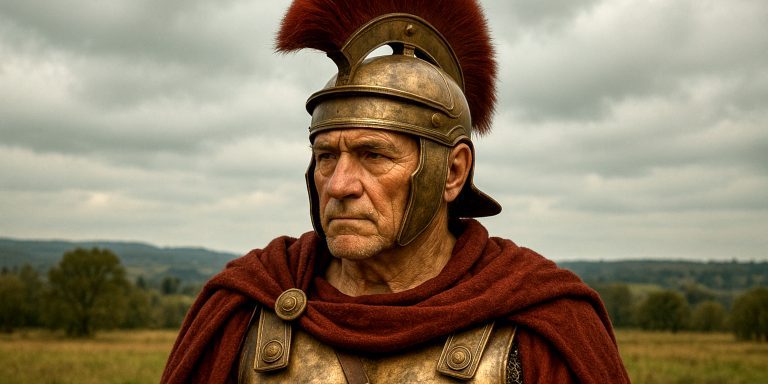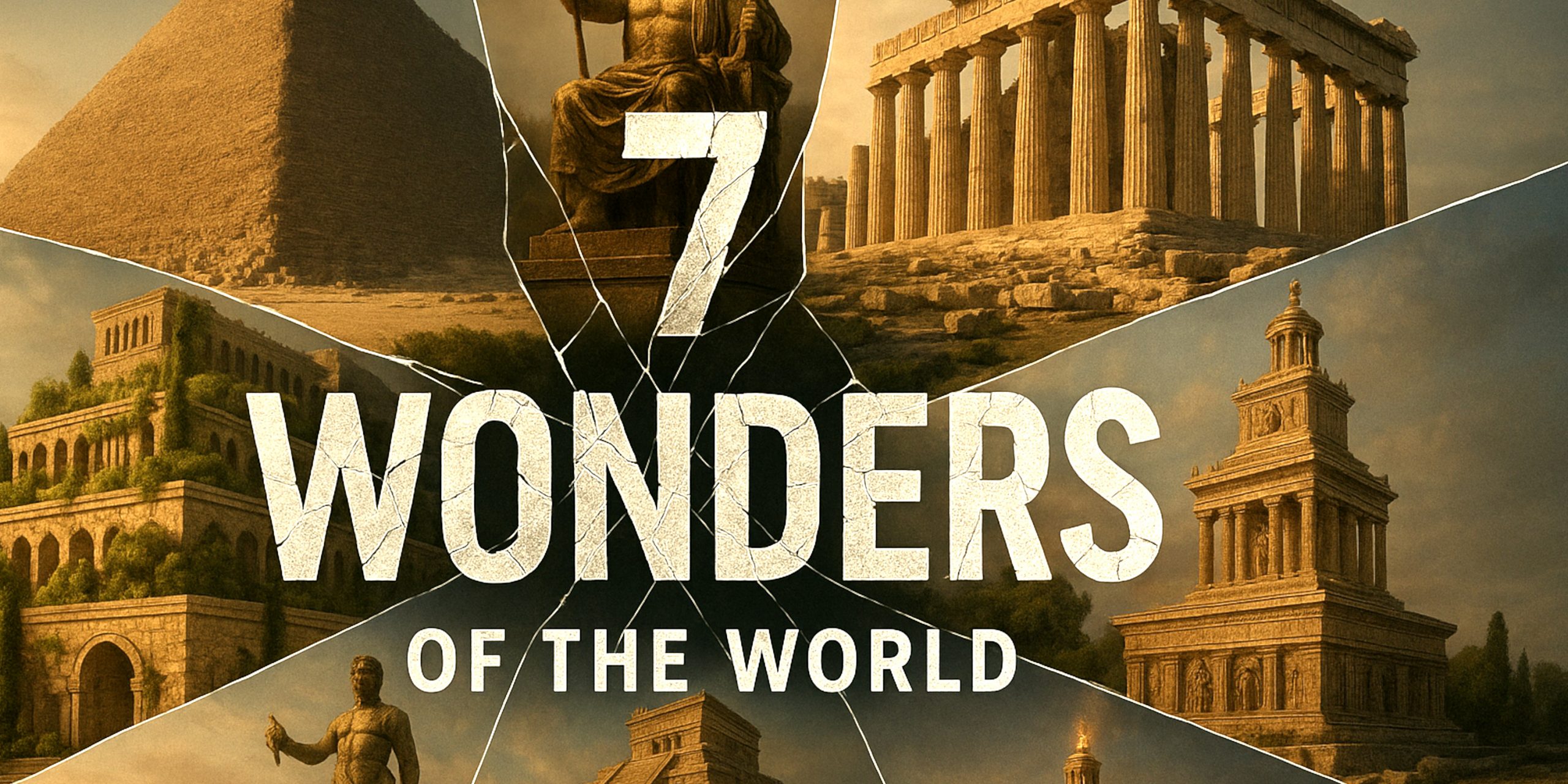
The 7 Wonders of the Ancient World are among the most famous cultural markers of antiquity. They were first listed by Greek writers who catalogued the monuments they regarded as the greatest feats of human creativity. These were not official designations but reflections of awe, admiration, and a desire to frame human achievement through the lens of Hellenic culture.
For the historian, the Wonders are both inspiring and frustrating. Only the Great Pyramid of Giza remains intact, while the others survive as ruins, fragments, or in texts. Yet archaeology, combined with historical sources, continues to reveal more about how they were constructed, what they symbolised, and why they have endured in memory.
The Seven Wonders
Great Pyramid of Giza
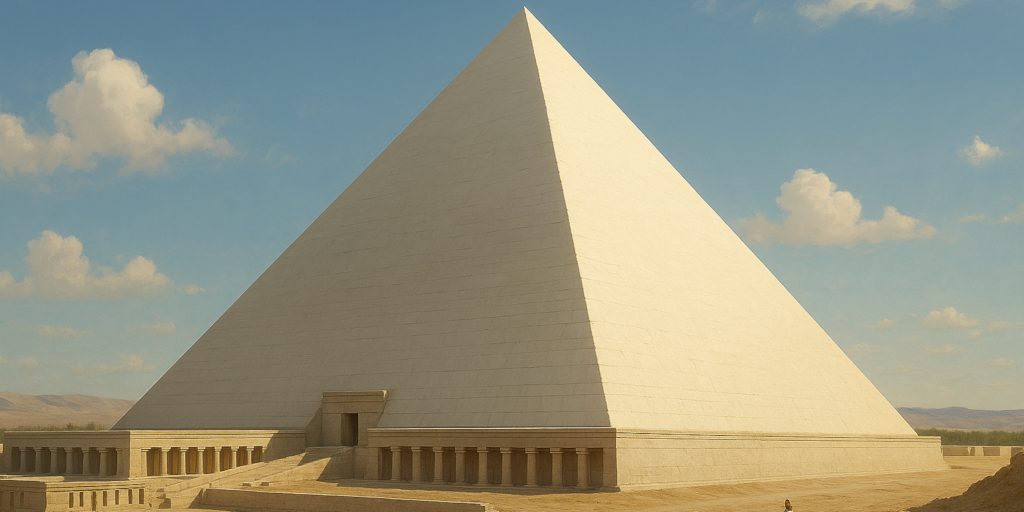
Built around 2560 BC as the tomb of Pharaoh Khufu, the Great Pyramid originally rose to about 146 metres. Its alignment with the cardinal points and the sheer scale of its construction have made it the most studied structure of antiquity. Remarkably, it is the only wonder still standing today, though its smooth limestone casing stones are long gone.
Hanging Gardens of Babylon
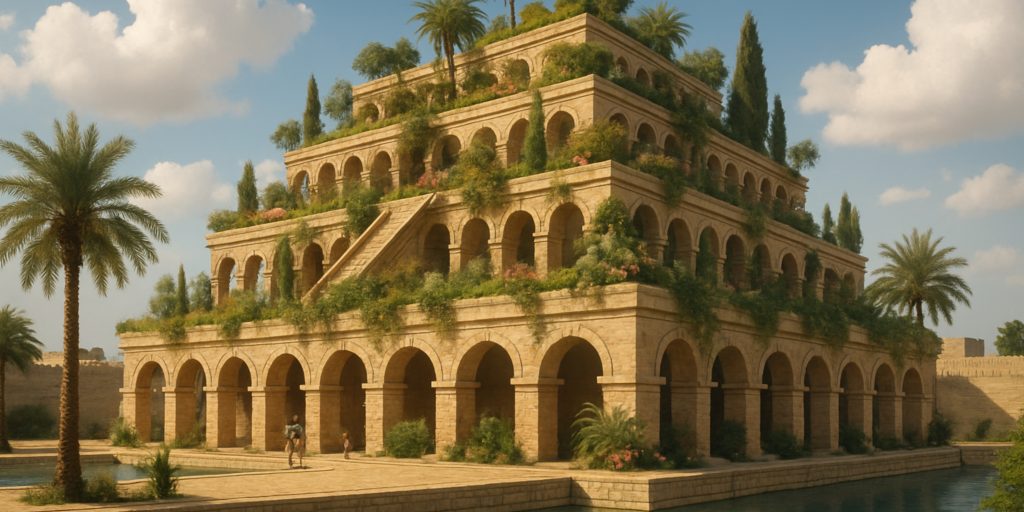
Described as terraced gardens rising above the city of Babylon, watered by complex irrigation systems, the gardens remain the most debated of the Wonders. Ancient accounts credit King Nebuchadnezzar II with their creation in the 6th century BC, but no archaeological trace has been found. Some argue they were located instead in Nineveh under Assyrian rule.
Statue of Zeus at Olympia
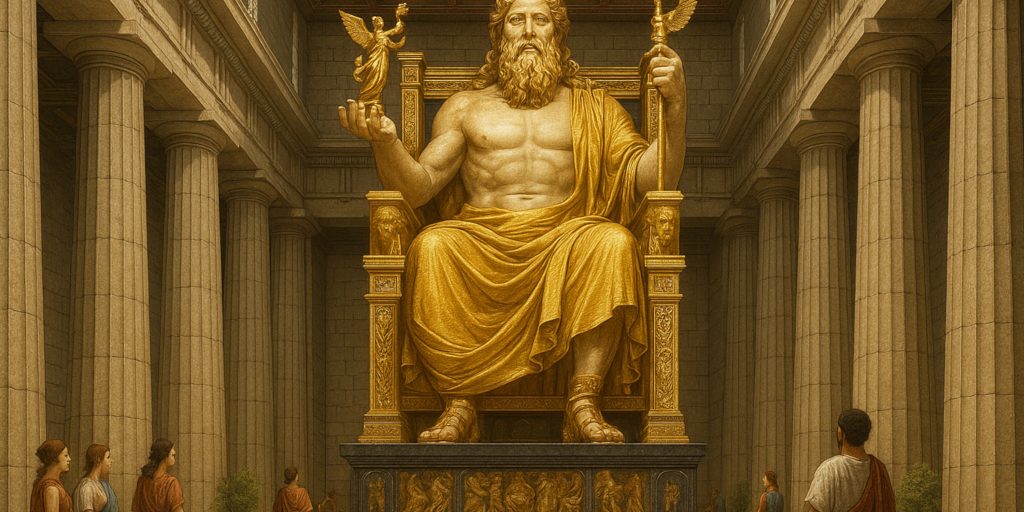
Crafted by the sculptor Phidias around 435 BC, the statue showed Zeus enthroned, draped in gold and ivory. Standing within the temple at Olympia, it drew pilgrims from across the Greek world. Its scale and artistry were celebrated until its destruction in late antiquity.
Temple of Artemis at Ephesus
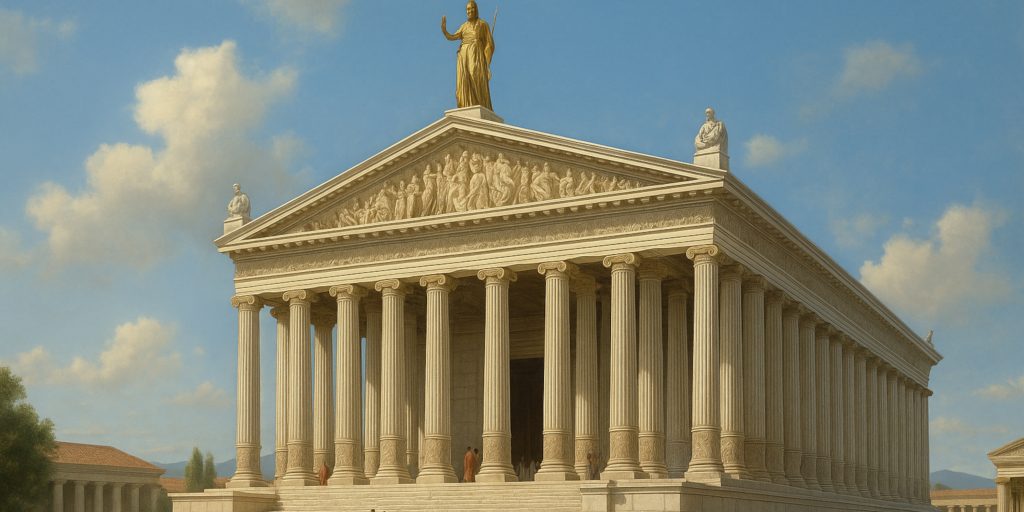
Built and rebuilt several times, the most famous version of the temple stood around 550 BC at Ephesus, in present-day Turkey. Dedicated to the goddess Artemis, it was renowned for its vast size, decorated columns, and elaborate sculptures. Destroyed and plundered, only its foundations and fragments remain today.
Mausoleum at Halicarnassus
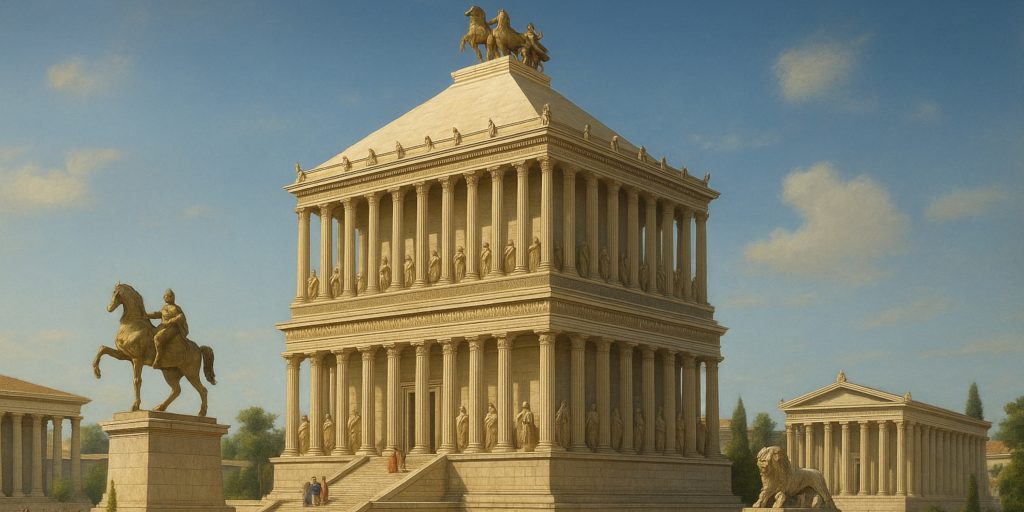
Constructed around 350 BC by Artemisia II for her husband Mausolus, the tomb blended Greek, Lycian, and Egyptian styles. Standing about 45 metres tall, it became so iconic that the word “mausoleum” is still used for monumental tombs. Earthquakes eventually reduced it to ruins, but fragments testify to its grandeur.
Colossus of Rhodes
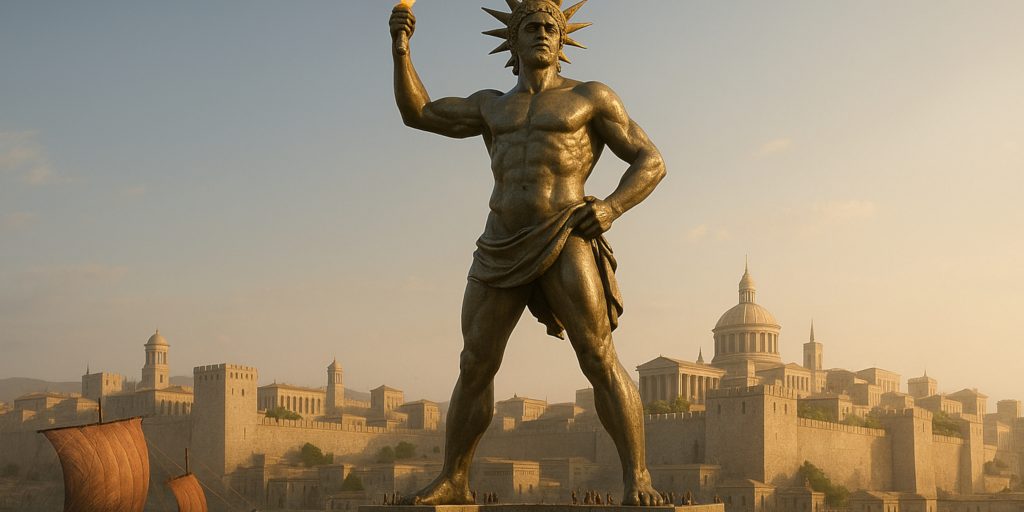
This enormous bronze statue of Helios was erected around 280 BC to commemorate Rhodes’ victory over a siege. Standing some 33 metres tall, it was one of the tallest statues of the ancient world. It collapsed after an earthquake in 226 BC, yet its image as a symbol of resilience remained powerful for centuries.
Lighthouse of Alexandria
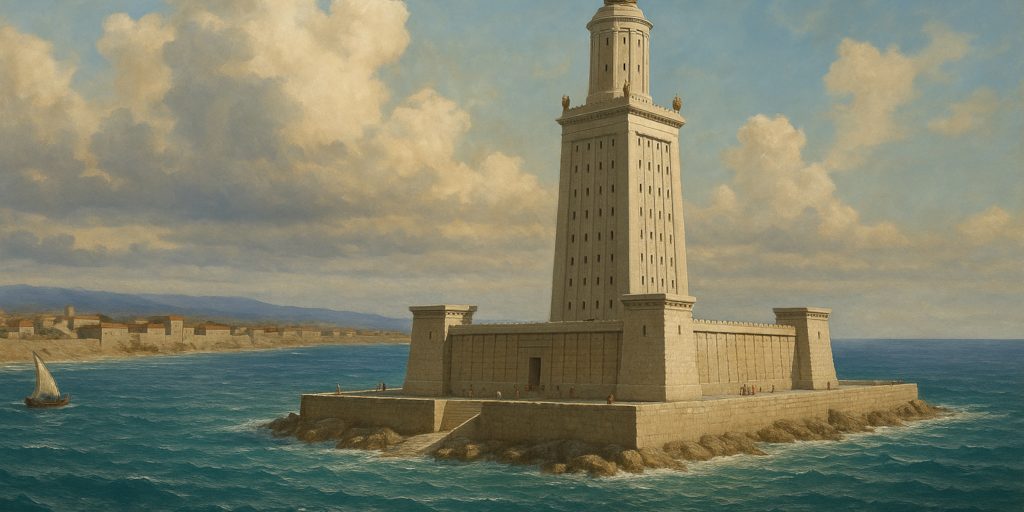
Built on Pharos Island around 280 BC during the reign of Ptolemy II, the lighthouse rose to perhaps 100–130 metres. It guided ships into Alexandria’s harbour using polished mirrors by day and fire by night. For centuries it served as the model for lighthouses worldwide, until earthquakes reduced it to ruins.
Comparison Table
| Wonder | Location (Modern) | Date Built | Purpose | Current Status |
|---|---|---|---|---|
| Great Pyramid of Giza | Giza, Egypt | c. 2560 BC | Tomb of Pharaoh Khufu | Still standing, partially stripped |
| Hanging Gardens of Babylon | Babylon, Iraq | c. 6th century BC | Royal gardens (disputed) | Existence unconfirmed |
| Statue of Zeus at Olympia | Olympia, Greece | c. 435 BC | Religious monument | Destroyed (5th century AD) |
| Temple of Artemis at Ephesus | Ephesus, Turkey | c. 550 BC (rebuilt) | Temple to Artemis | Ruins only |
| Mausoleum at Halicarnassus | Bodrum, Turkey | c. 350 BC | Tomb of Mausolus | Destroyed by earthquakes |
| Colossus of Rhodes | Rhodes, Greece | c. 280 BC | Monument to victory | Destroyed by earthquake (226 BC) |
| Lighthouse of Alexandria | Pharos Island, Egypt | c. 280 BC | Navigation aid | Destroyed by earthquakes (14th c.) |
Latest Archaeology
Great Pyramid of Giza
In 2017, researchers discovered a hidden void above the Grand Gallery using muon imaging, suggesting the pyramid still contains unknown chambers. Excavations of workers’ villages nearby have shown that skilled labourers, not slaves, built it, reshaping popular perceptions of its construction.
Hanging Gardens of Babylon
No remains have been found at Babylon itself. However, studies of Assyrian texts from Nineveh describe advanced irrigation systems that could match the descriptions of the gardens. If true, the famous wonder may have been misplaced by Greek writers.
Statue of Zeus at Olympia
The statue is lost, but excavations revealed the workshop of Phidias. Moulds, tools, and ivory fragments were discovered, proving the accuracy of ancient descriptions and offering insight into chryselephantine (gold and ivory) sculpture.
Temple of Artemis at Ephesus
Excavations uncovered column bases, sculpted reliefs, and decorative fragments, now in the British Museum. Recent site surveys highlight how the temple’s vast footprint dominated the urban centre of Ephesus, reflecting its dual role as a religious and commercial hub.
Mausoleum at Halicarnassus
Archaeological work at Bodrum has recovered sections of reliefs, colossal statues, and pieces of the frieze. These fragments confirm the fusion of styles that made the Mausoleum distinctive. They also underscore how it functioned both as a personal tomb and as a display of dynastic power.
Colossus of Rhodes
Little survives, but scholars now believe the statue stood inland rather than straddling the harbour. Excavations around the ancient city have revealed foundations and bronze fragments, though none definitively linked to the statue.
Lighthouse of Alexandria
Underwater archaeology has uncovered enormous stone blocks and statues from the seabed near Pharos Island. These remains are widely believed to be parts of the lighthouse. Proposals to turn the site into an underwater archaeological park could one day make it accessible to divers and visitors.
Legacy
The 7 Wonders are as much a product of imagination as of stone and bronze. They symbolised human ambition, wealth, and devotion, often designed to project power as much as to inspire awe. That only the Great Pyramid survives intact is a reminder of the fragility of even the grandest monuments.
For historians, their importance lies not only in their architecture but in the values they represent: permanence, spectacle, and cultural pride. Archaeology continues to illuminate their stories, ensuring that even when reduced to ruins or legend, they remain embedded in the memory of civilisation.
Watch the documentary:



